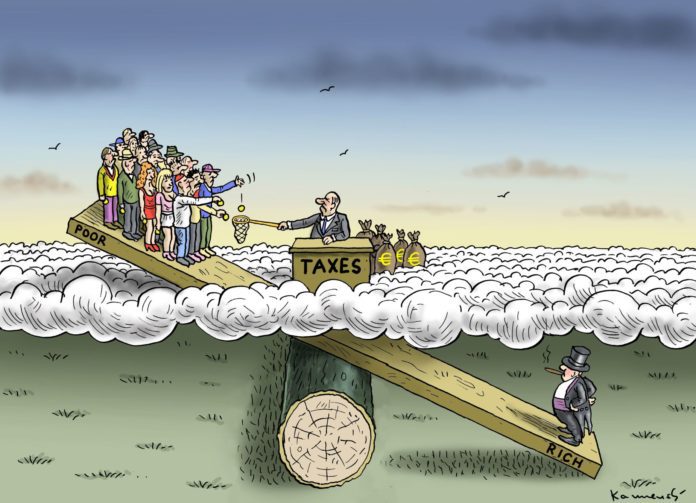BY JOE DORMAN
 No one likes paying taxes, but as the saying goes, it is one of the certainties in life [the other being death]. This breakdown of the tax structure in Oklahoma should help you understand more about the state budget process. This does not count matching federal dollars and fees collected, and any changes in one area will shift percentages.
No one likes paying taxes, but as the saying goes, it is one of the certainties in life [the other being death]. This breakdown of the tax structure in Oklahoma should help you understand more about the state budget process. This does not count matching federal dollars and fees collected, and any changes in one area will shift percentages.
Income taxes are the largest source of revenue for state government, bringing in about 36% of state tax receipts. Oklahoma enacted an individual income tax in 1915 and then a corporate income tax in 1931.
Oklahoma has a progressive income tax for individuals and couples based on earnings, in which the tax rate increases from .5% to 5%. The Oklahoma corporate income tax is a flat rate of 6% for all corporations, regardless of earnings.
Oklahoma’s sales tax was first enacted in 1933 as a temporary 1% tax for the support of public schools. Two years later, the tax was renewed, with revenues being deposited into the state’s General Fund. In 1939, the sales tax rate was increased to 2% with the revenues directed to fund public assistance programs. This rate remained unchanged until the 1980s when the tax rate was gradually doubled from 2% to 4% and directed to the General Revenue Fund.
In 1990, the passage of the “Education Reform and Revenue Act,” also known as HB 1017, increased the rate to the present 4.5%.
State sales taxes are now the second largest source of revenue for the state government, accounting for approximately 28% of total state revenue.
Sales taxes can be raised locally and are the primary funding source for municipalities.
The state also levies a gross production tax, which brings in about 12% of the state budget revenue. This takes the form of an excise tax, with the amount based upon the sale price of oil and natural gas. While this was established at 7% up until 2004, the Legislature reduced this to 2% in 2014 for the highest performing years of the wells.
In addition, these are other taxes collected by the state and their collections as a percentage of the budget:
Motor Vehicle Excise Tax – 8%
Motor Fuel Excise Tax – 6%
Tobacco Tax – 4%
Insurance Premium Excise Tax – 2%
Alcoholic Beverage Excise Tax – 1%
In 1933, the Oklahoma Constitution was amended to prohibit state-level taxation of property, known as ad valorem taxes. The bulk of property taxes in Oklahoma go to schools and county governments, with a small amount allowed for certain municipal uses.
In 2012, Oklahomans approved State Question 766 to ban intangible business taxes. This included patents, inventions, formulas, designs, and trade secrets; licenses, franchises, and contracts; land leases, mineral interests, and insurance policies; custom computer software; and trademarks, trade names and brand names. Elimination of this tax was estimated to be $100 million.
I hope this helps you stay informed. Please engage your legislators so they make the best decisions on where your dollars are spent.
– Joe Dorman served District 65 as a state representative for 12 years and was the 2014 Democratic nominee for governor. He is currently the Community Outreach Director for True Wireless and a member of the Rush Springs Town Council.







